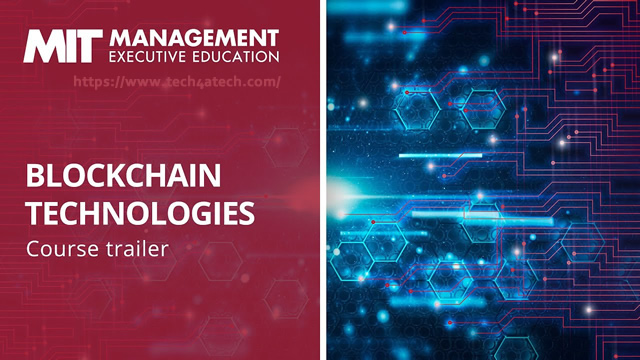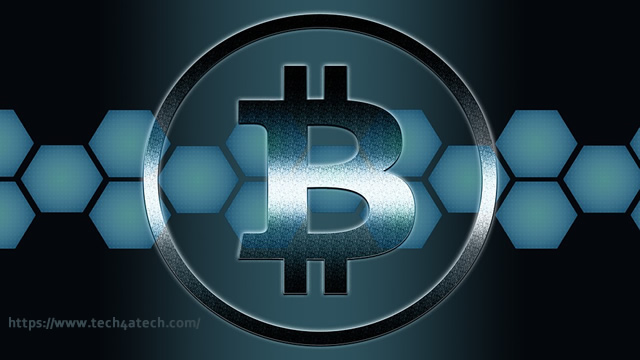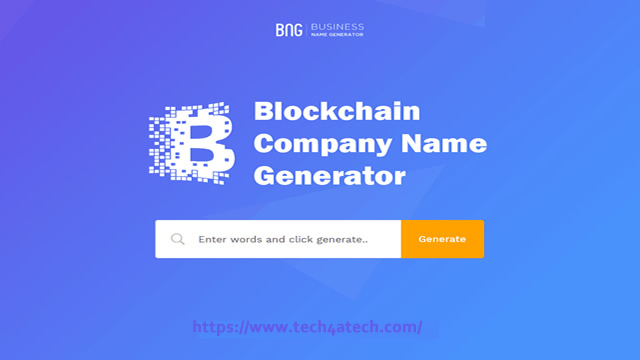PART (5)
BTA-Blockchain-Business-Foundations
Blockchain Use
Cases
Cases
Introduction:
Newcomers to blockchain are often quick to ask,
“who is actually using blockchain technology and what value are they
getting out of it?” In this chapter, we take a look at several
blockchain use cases and implementations.
“who is actually using blockchain technology and what value are they
getting out of it?” In this chapter, we take a look at several
blockchain use cases and implementations.
Background
Checks
Being able to verify and validate someone’s
transcripts, diplomas or education achievement claims. With a verification and
immutable data on the blockchain, fraudulent achievements will be null and
void. For instance, fake medical degrees is a real and urgent problem. A
congressional committee over 25 years ago estimated there were about 5,000 fake
doctors in the United States alone. That number is believed to have grown at a
staggering pace since then due to the prevalence of the counterfeit degrees
sold on the internet. People have and will continue to die at the hands of
these counterfeit degrees. Blockchain presents a viable solution to this
problem.
transcripts, diplomas or education achievement claims. With a verification and
immutable data on the blockchain, fraudulent achievements will be null and
void. For instance, fake medical degrees is a real and urgent problem. A
congressional committee over 25 years ago estimated there were about 5,000 fake
doctors in the United States alone. That number is believed to have grown at a
staggering pace since then due to the prevalence of the counterfeit degrees
sold on the internet. People have and will continue to die at the hands of
these counterfeit degrees. Blockchain presents a viable solution to this
problem.
 |
Management-Blockchain-Technologies-10 |
Personal
Identification
Birth certificates, passports, identification cards
and other forms of personal identification can become counterfeit lost and
altered. Blockchain provides a potential solution for some of these
problems.
and other forms of personal identification can become counterfeit lost and
altered. Blockchain provides a potential solution for some of these
problems.
Land
Registries
It is estimated that at least one out of every
three land titles contain an error. Title companies in the United States pay
out billions of dollars in claims every year due to these errors. Blockchain
could provide an immutable record of ownership and move the storage of
ownership history from a paper record filed with a government building to a
distributed and immutable ledger.
three land titles contain an error. Title companies in the United States pay
out billions of dollars in claims every year due to these errors. Blockchain
could provide an immutable record of ownership and move the storage of
ownership history from a paper record filed with a government building to a
distributed and immutable ledger.
Financial
Services – Securities Clearing
The banking, accounting, economic circles are
enamored with the opportunity blockchain possess, for good reason. Its ability
to provide bank-like services and also offer currencies that meet so many of
the requirements of what a currency should do.
enamored with the opportunity blockchain possess, for good reason. Its ability
to provide bank-like services and also offer currencies that meet so many of
the requirements of what a currency should do.
Global Supply
Chain
Global Supply Chain is a huge area where many feel
blockchain will see one of the most immediate impacts. In fact, in 2018,
Walmart announced that they will be requiring all produce suppliers to be
utilizing a blockchain solution by the Q3 2019. They have stated that they
intend to issue the same requirement amongst all produce suppliers by 2020. Supply
chain will also have a large impact on automotive, so much so that companies
like Mercedes are spending hundreds of millions of dollars to just explore
possible solutions. The automotive industry believes that there will be a large
financial gain from the implementation of blockchain when it comes to recalls
and even counterfeit items. It is estimated that nearly 30% of the air bags in
the United States are Counterfeit. Being able to bring this number down
significantly stands to save so many industries billions of dollars.
blockchain will see one of the most immediate impacts. In fact, in 2018,
Walmart announced that they will be requiring all produce suppliers to be
utilizing a blockchain solution by the Q3 2019. They have stated that they
intend to issue the same requirement amongst all produce suppliers by 2020. Supply
chain will also have a large impact on automotive, so much so that companies
like Mercedes are spending hundreds of millions of dollars to just explore
possible solutions. The automotive industry believes that there will be a large
financial gain from the implementation of blockchain when it comes to recalls
and even counterfeit items. It is estimated that nearly 30% of the air bags in
the United States are Counterfeit. Being able to bring this number down
significantly stands to save so many industries billions of dollars.
Healthcare
Healthcare is one of the first places people who
learn about blockchain gravitate to immediately. The potential that blockchain
has for impact in healthcare is astounding. It stands to not only save
millions, curb counterfeiting, empower patients, but most of all save lives.
This will affect EMRs, insurance claims, genome research and so much
more.
learn about blockchain gravitate to immediately. The potential that blockchain
has for impact in healthcare is astounding. It stands to not only save
millions, curb counterfeiting, empower patients, but most of all save lives.
This will affect EMRs, insurance claims, genome research and so much
more.
Airlines
Airlines are looking at blockchain as a way to
replace and/or enhance registration, rebooking, vouchers, and loyalty programs.
Airlines are also looking at blockchain as the way to track the maintenance and
upkeep of incredibly complex devices. The number of critical components inside
a modern jet airliner and the amount of traceability and auditability that goes
into any work, repair and adjustment of those complex machines is incredible
and you can probably now begin to see why airline companies are making such an
investment into blockchain.
replace and/or enhance registration, rebooking, vouchers, and loyalty programs.
Airlines are also looking at blockchain as the way to track the maintenance and
upkeep of incredibly complex devices. The number of critical components inside
a modern jet airliner and the amount of traceability and auditability that goes
into any work, repair and adjustment of those complex machines is incredible
and you can probably now begin to see why airline companies are making such an
investment into blockchain.
Tokenized
Economies
“Tokens” or digitalized assets have opened up a
fascinating new world that has never before existed. A way to allow people to
own, trade, buy, sell, track and maintain incredibly small ownership pieces of
real- world assets. This tokenized fractional asset ownership is enabling many
new business models.
fascinating new world that has never before existed. A way to allow people to
own, trade, buy, sell, track and maintain incredibly small ownership pieces of
real- world assets. This tokenized fractional asset ownership is enabling many
new business models.
 |
Bitcoin-Blockchain-06 |
Payment
Channels
With complete and up to date micropayment and
payment records, a business would foreseeably never have to stop and square up
their books with any of their suppliers, venders, manufactures, lenders, etc.
Instead all participants in a business network could know exactly where they
stand at all times. This would give business leaders and decision makers
greater clarity and insight into our business’. This could also simplify the
maintenance upkeep and accounting process, allowing leaders to focus on
activities with a high value add or return for time spent.
payment records, a business would foreseeably never have to stop and square up
their books with any of their suppliers, venders, manufactures, lenders, etc.
Instead all participants in a business network could know exactly where they
stand at all times. This would give business leaders and decision makers
greater clarity and insight into our business’. This could also simplify the
maintenance upkeep and accounting process, allowing leaders to focus on
activities with a high value add or return for time spent.
Blockchain
Adoption
Blockchain is being considered by more than half of
the world’s fortune 500 companies according to a Juniper Market Research
Survey. It is estimated that $2.3 billion were spent on blockchain by the end
of 2018. What effect is this going to have? Blockchain is bringing us the
internet of value.
the world’s fortune 500 companies according to a Juniper Market Research
Survey. It is estimated that $2.3 billion were spent on blockchain by the end
of 2018. What effect is this going to have? Blockchain is bringing us the
internet of value.
Blockchain opens up entirely new business models,
due to the fact blockchain is able to transcend physical and geographical
barriers and uses math and cryptography to enable transactions globally. The
uniqueness of blockchain lies in its ability to retain person to person
transactions globally.
due to the fact blockchain is able to transcend physical and geographical
barriers and uses math and cryptography to enable transactions globally. The
uniqueness of blockchain lies in its ability to retain person to person
transactions globally.
Blockchain today is often compared to the internet
in the nineties. We are seeing the effects from blockchain that are similar to
the effects the internet brought about in the nineties. We don’t fully
understand this technology and therefore cannot fully utilize its applications.
Because we have the internet, we are seeing a much faster spread of blockchain,
and blockchain is one step closer to web 3.0.
in the nineties. We are seeing the effects from blockchain that are similar to
the effects the internet brought about in the nineties. We don’t fully
understand this technology and therefore cannot fully utilize its applications.
Because we have the internet, we are seeing a much faster spread of blockchain,
and blockchain is one step closer to web 3.0.
|
Blockchain-Company-Name-Generator
|
Web 3.0
In order to understand Web 3.0, it is important to
first understand what web 1.0 and 2.0 were. Web 1.0 is the first integration of
the internet. This took place in the nineties and was led by the visionary, Sir
Tim Berners-Lee. Berners-Lee had a vision of decentralizing content. He wanted
people to be able to access content without the need of a third party.
first understand what web 1.0 and 2.0 were. Web 1.0 is the first integration of
the internet. This took place in the nineties and was led by the visionary, Sir
Tim Berners-Lee. Berners-Lee had a vision of decentralizing content. He wanted
people to be able to access content without the need of a third party.
Web 2.0 is the current age of the internet and is
considered the age of social media. Web 2.0 decentralized people. People now do
not have to go through a third party to communicate with each other.
considered the age of social media. Web 2.0 decentralized people. People now do
not have to go through a third party to communicate with each other.
Web 3.0 is the Internet of Value
Blockchain
Implementation
Implementation
Introduction:
Bitcoin used blockchain to store financial
transactions, but the data can be anything from a vote in an election to an
entire book. This is important when considering practical use cases for
blockchain. As we know, blockchain is a distributed, immutable, highly secure
database and many industries could take advantage of the transparency that
blockchain provides. For example, blockchain technology could change how voting
works. Blockchain would allow for voters to be 100% certain their vote is being
counted. A good use case will do one of two things: It will either allow for
new possibilities that have never been possible before or improve certain
aspects of an existing process.
transactions, but the data can be anything from a vote in an election to an
entire book. This is important when considering practical use cases for
blockchain. As we know, blockchain is a distributed, immutable, highly secure
database and many industries could take advantage of the transparency that
blockchain provides. For example, blockchain technology could change how voting
works. Blockchain would allow for voters to be 100% certain their vote is being
counted. A good use case will do one of two things: It will either allow for
new possibilities that have never been possible before or improve certain
aspects of an existing process.
Blockchain is not always a better alternative to a
database.
database.
Blockchain has a few drawbacks that need to be
considered when attempting to implement it. Starting with how new blockchain
is, to the stigma of its use originating in the Dark Web. The creation of
blockchain is also a mystery that tends to put people on edge. ICO/ITO scams
and the misperception that blockchain is just another name for cryptocurrency
are also drawbacks that aren’t technical but do impact the adoption of
blockchain itself.
considered when attempting to implement it. Starting with how new blockchain
is, to the stigma of its use originating in the Dark Web. The creation of
blockchain is also a mystery that tends to put people on edge. ICO/ITO scams
and the misperception that blockchain is just another name for cryptocurrency
are also drawbacks that aren’t technical but do impact the adoption of
blockchain itself.
More tangible challenges with blockchain today
include the fact that blockchain technology is still changing and evolving,
best practices and recommended patterns for implementation are still being
formed. There are not very many trained resources and therefore, the cost of
trained resources is high. Finally, scalability is a core concern when it comes
to blockchain. Blockchain prioritizes security over speed. Therefore, solutions
that require high transaction speeds are not good candidates for Blockchain.
Different group consensus methods beyond Proof of Work are currently being proposed
to overcome current scalability limitations. Today, most major public
blockchain are able to process 10-20 transactions per second worldwide.
include the fact that blockchain technology is still changing and evolving,
best practices and recommended patterns for implementation are still being
formed. There are not very many trained resources and therefore, the cost of
trained resources is high. Finally, scalability is a core concern when it comes
to blockchain. Blockchain prioritizes security over speed. Therefore, solutions
that require high transaction speeds are not good candidates for Blockchain.
Different group consensus methods beyond Proof of Work are currently being proposed
to overcome current scalability limitations. Today, most major public
blockchain are able to process 10-20 transactions per second worldwide.
Data Sovereignty is another factor to consider when
comparing blockchain solutions versus traditional ones. In a centralized
system, all data is owned by the system owner. In scenarios where one must
demonstrate they own and control the data as well as demonstrate where it is
and is not stored, blockchain may not be a good solution (although private
blockchains can still be a viable option here).
comparing blockchain solutions versus traditional ones. In a centralized
system, all data is owned by the system owner. In scenarios where one must
demonstrate they own and control the data as well as demonstrate where it is
and is not stored, blockchain may not be a good solution (although private
blockchains can still be a viable option here).
Transaction times are very high in blockchain, but
solutions are being investigated. One such solution includes using off chain
transactions to lower transaction times.
solutions are being investigated. One such solution includes using off chain
transactions to lower transaction times.
Web 3.0 plans to decentralize finance. We saw this
first with Bitcoin, but it is continuing to evolve and will soon make all
assets decentralized. There are things we need to accomplish before reaching
the goal of web 3.0 and the primary problem needing attention is transaction
speed. Many solutions are being worked on and one of these solutions is
off-chain protocol. Off-chain works by having multiple transactions verified
and added to a chain separate from the main before being added to the main
chain.
first with Bitcoin, but it is continuing to evolve and will soon make all
assets decentralized. There are things we need to accomplish before reaching
the goal of web 3.0 and the primary problem needing attention is transaction
speed. Many solutions are being worked on and one of these solutions is
off-chain protocol. Off-chain works by having multiple transactions verified
and added to a chain separate from the main before being added to the main
chain.
One thing is for certain about web 3.0, it will not
look anything like web 2.0 or web 1.0. All of the previous web components will
still be critical pieces, but entirely new business models will open up with
web 3.0. Individual consumers will be able to do things that were previously
reserved for only the richest and most powerful organizations on earth. The
effects this will have are going to be profound and transformative.
look anything like web 2.0 or web 1.0. All of the previous web components will
still be critical pieces, but entirely new business models will open up with
web 3.0. Individual consumers will be able to do things that were previously
reserved for only the richest and most powerful organizations on earth. The
effects this will have are going to be profound and transformative.
 |
Blockchain-Company-Name-Generator-02 |